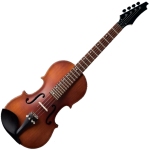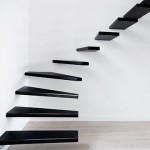Arranging Exercise: Homophonic
 One of the basic techniques of arranging is writing homophonic parts. Homophonic means that all voice groups sing the same lyrics at the same time. In this exercise you will be writing simple four-part chords in the song Eternal flame by The Bangles. In the accompanying pdf the melody and chord symbols are given. As an example, the first bar of the bass is written out. The exercise looks like this:
One of the basic techniques of arranging is writing homophonic parts. Homophonic means that all voice groups sing the same lyrics at the same time. In this exercise you will be writing simple four-part chords in the song Eternal flame by The Bangles. In the accompanying pdf the melody and chord symbols are given. As an example, the first bar of the bass is written out. The exercise looks like this:
 If you want to learn how to arrange, you have to practice writing chords. In my classes I often find that writing chords over four staffs is difficult for aspiring arrangers. Therefore, I devised some easy exercises. First, here is an exercise for writing triads.
If you want to learn how to arrange, you have to practice writing chords. In my classes I often find that writing chords over four staffs is difficult for aspiring arrangers. Therefore, I devised some easy exercises. First, here is an exercise for writing triads. Most warm-ups I think of have two layers at most. But this time I have an exercise with three layers, in which the two upper voices imitate each other:
Most warm-ups I think of have two layers at most. But this time I have an exercise with three layers, in which the two upper voices imitate each other: Last week, I showed a first version of the animation of beating patterns. The application is more extensive now. You may find the new animation
Last week, I showed a first version of the animation of beating patterns. The application is more extensive now. You may find the new animation  At the conservatory where I teach, I often see the students have difficulty learning a good beating technique. In the books on beating technique there are pictures of beating patterns. These pictures indicate the directions in which to move. But they do not indicate the speed of the movements. The pictures cannot convey the ‘bounce’ in the beat. Therefore, the use of the books in learning a good beating technique is limited.
At the conservatory where I teach, I often see the students have difficulty learning a good beating technique. In the books on beating technique there are pictures of beating patterns. These pictures indicate the directions in which to move. But they do not indicate the speed of the movements. The pictures cannot convey the ‘bounce’ in the beat. Therefore, the use of the books in learning a good beating technique is limited. Lately I heard the lovely Canon in D by Pachelbel again. Because the chords are repeating, the music can easily be made into a warm-up for multiple voices. Here is my attempt to create a swinging Pachelbel. The canon now is in G:
Lately I heard the lovely Canon in D by Pachelbel again. Because the chords are repeating, the music can easily be made into a warm-up for multiple voices. Here is my attempt to create a swinging Pachelbel. The canon now is in G: This exercise for singing in canon is built up of seconds and sixths. The warm-up looks like the exercise form my book ‘Harmoninic warm-ups’, but it is just a little different:
This exercise for singing in canon is built up of seconds and sixths. The warm-up looks like the exercise form my book ‘Harmoninic warm-ups’, but it is just a little different: From the moment I started making music, when I was eightteen, I wondered why there is such a vast difference between classical music and pop & jazz. I know, I’m generalising. There are plenty of listeners who enjoy both styles of music. Some musicians work in both fields. There are classical composers who were inspired by jazz, like Stravinsky and Poulenc. And there a rock musicians inspired by classical masters, like (the Dutch) Focus and Robin Thicke.
From the moment I started making music, when I was eightteen, I wondered why there is such a vast difference between classical music and pop & jazz. I know, I’m generalising. There are plenty of listeners who enjoy both styles of music. Some musicians work in both fields. There are classical composers who were inspired by jazz, like Stravinsky and Poulenc. And there a rock musicians inspired by classical masters, like (the Dutch) Focus and Robin Thicke. In one of my choirs there is a singer who insists on doing swinging warm-up exercises. Thus, I wrote another. This time, there are fast syncopations in a latin style:
In one of my choirs there is a singer who insists on doing swinging warm-up exercises. Thus, I wrote another. This time, there are fast syncopations in a latin style: Here is part two of the exercises in which you have to chose between notating a sharp or a flat.
Here is part two of the exercises in which you have to chose between notating a sharp or a flat.